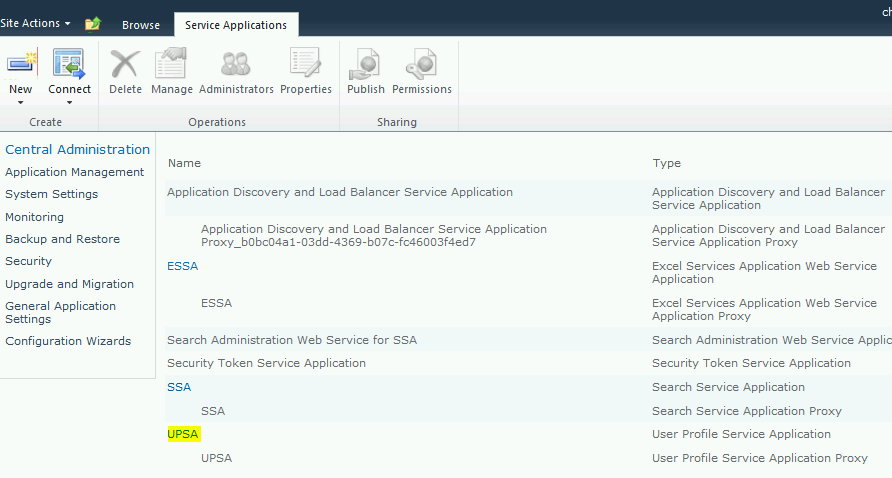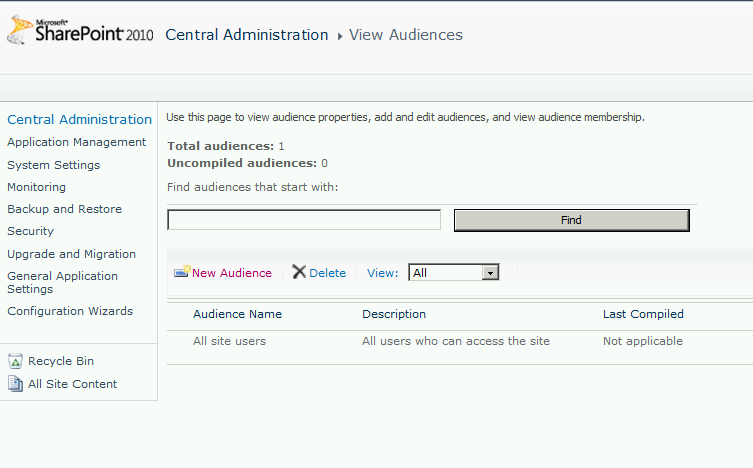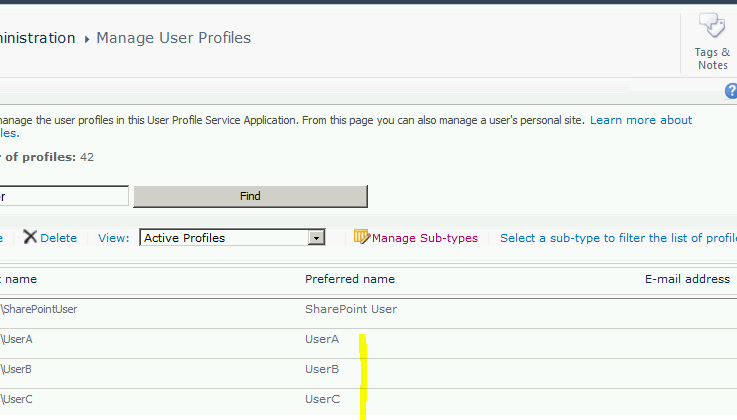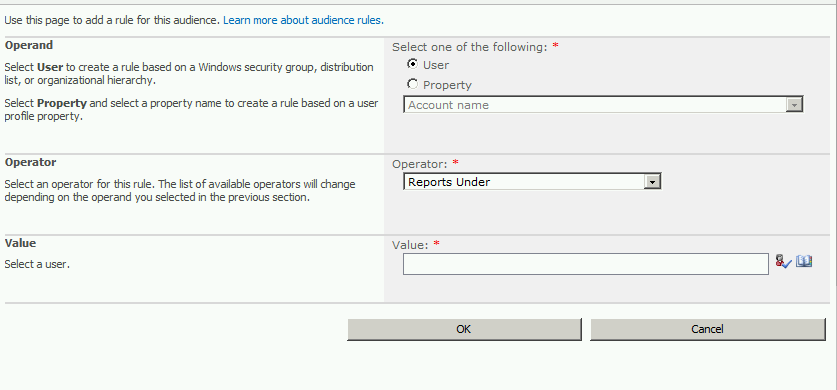How to utilise audience targeting in SharePoint
This article will explain how to setup and configure audience targeting in SharePoint 2010. Before I get started with the guide, I’d like to mention that an Audience is a part of the User Profile Service Application.
To manage a SharePoint Audience you will need to open Central Administration website
Application Management—–> Manage Service Applications—–>UPSA (UPSA is the name of my user profile service application)
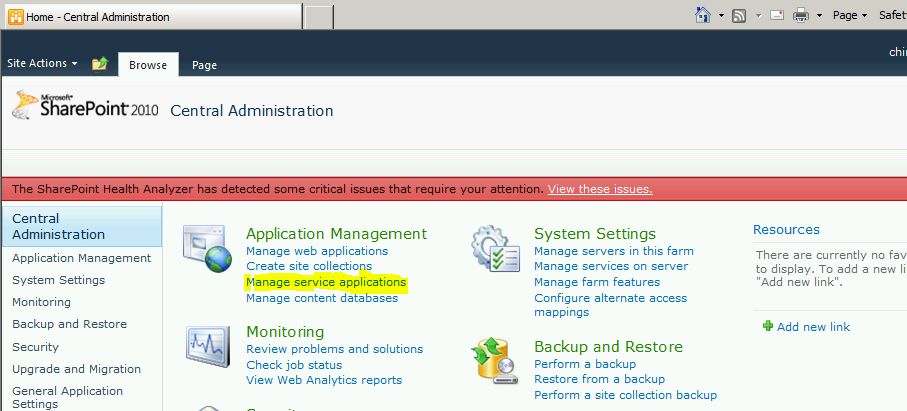 Select your User Profile Service…
Select your User Profile Service…
Click on Manage Audiences
Now on the View Audiences Screen
What is a SharePoint Audience ?
To read a more in-depth discussion about what an audience is please read ‘What is a SharePoint Audience‘.
SA SharePoint Audience is dynamically populated group of Users that are defined based on a set of ‘rules’ that define who is a member of that Audience. Audiences are only available in SharePoint Standard and above or MOSS.
Once an Audience is configured it can then be manually compiled, or scheduled to compile – usually overnight. The process of compiling the audience causes SharePoint to evaluate all of the rules against the user data store (usually Active Directory aka. AD). Any users that match the rules will be added to the audience. Rules can vary greatly but are based on either a user profile property (such as Department, Name, Role, etc), or based on criteria such as “Give me all the users who report to Frank Roberts!”.
SharePoint supports two kinds of Audiences (quoted from Technet):
Global audiences
Global audiences are defined by properties in a User Profile service application. Global audiences include audiences that are defined by relationships (reporting structures), as well as other properties.
Windows security groups and distribution lists
The Windows security groups that are available when you are creating audiences are those that are imported when user profiles synchronized with the User Profile service application.
The distribution lists that are available when you are creating audiences are those that are imported when user profiles are imported into the User Profile service application.
The best way to understand any feature is to implement it practically. Keeping that in mind, I have created three users in active directory: User A, User B and User C. User A and User B are from Finance department and User C is from Sales department. Below is a screenshot from Active Directory Users and Computers:
Once I have created the users I will make sure to run a user profile import in SharePoint to import the newly created users and their profile attributes. Below screenshot displays imported users:
Now, in order to create a new Audience navigate to User Profile service application and click on Manage Audience—-> New Audience
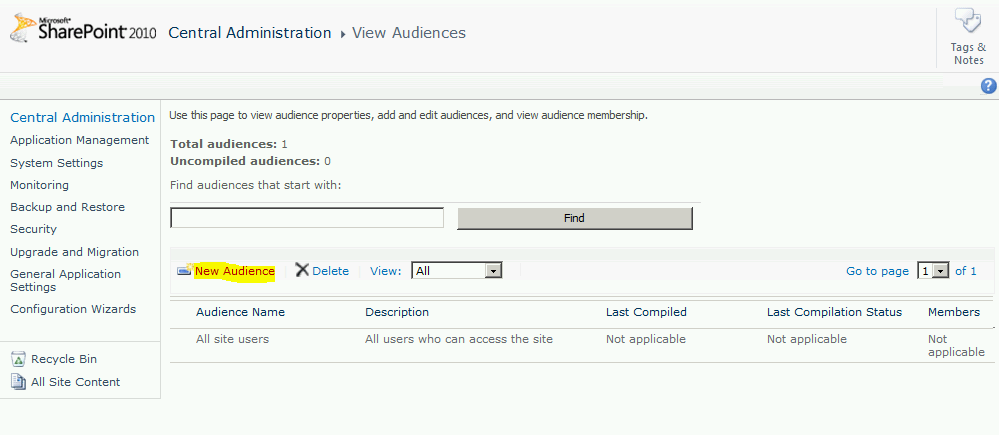 Give it a name, description and an owner as per your requirement. For my example I intend to target users in Finance department so, I will give it the name “Finance Audience” and I will make myself as the owner. In the radio button I will check satisfy all of the rules and click OK. You can choose either of the two options based on the logic on which you want to compile your Audience.
Give it a name, description and an owner as per your requirement. For my example I intend to target users in Finance department so, I will give it the name “Finance Audience” and I will make myself as the owner. In the radio button I will check satisfy all of the rules and click OK. You can choose either of the two options based on the logic on which you want to compile your Audience.
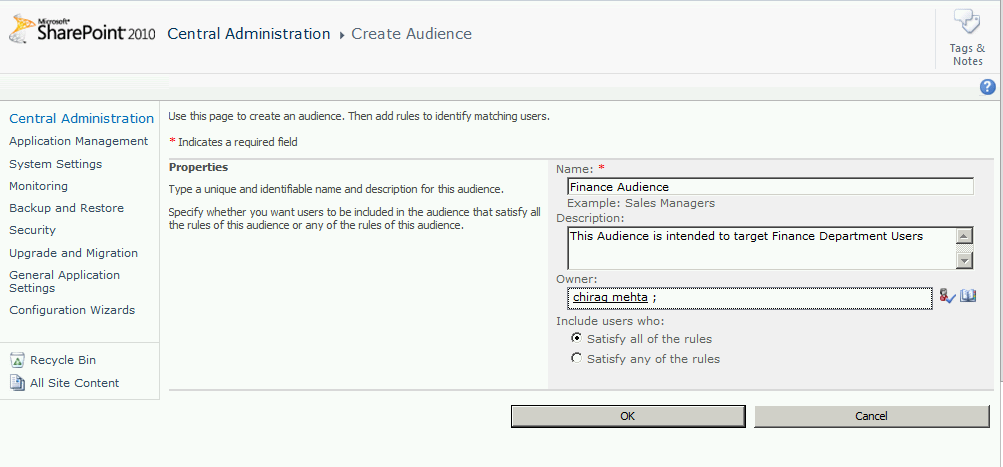
On the next page you get two options to select under “Operand”, either a user or a property. If for instance you want the audience to be those users who share the same reporting manager, you will choose “User” option.
For my example I intend to target Finance department users so I will choose “property” and in the drop down I will select “Department” property. In the operator section select “=” operator and in value mention the name of the target department, which in my case is “Finance” and click OK.
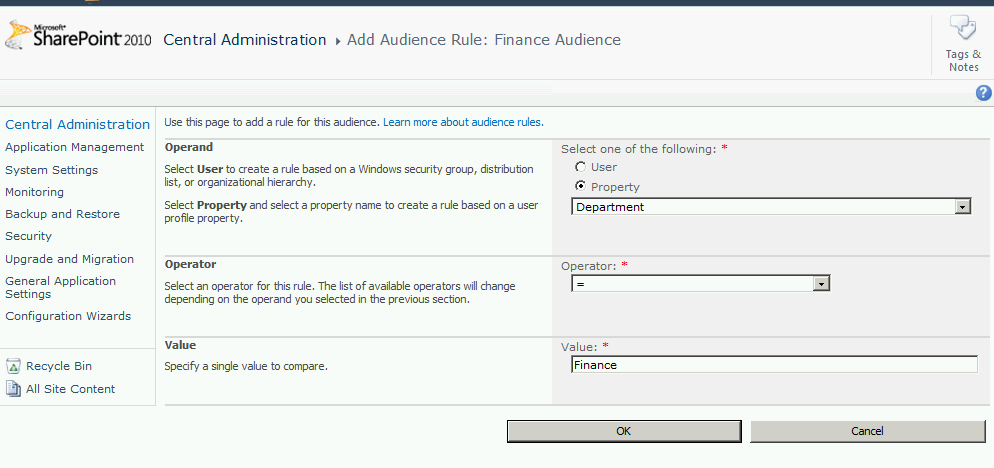
Congratulations!! We have created a new Audience. So, are we ready to target content to this Audience? Not yet, we still haven’t compiled the Audience. Just like when we create a new user in Active Directory, we have to run profile import to bring the user and it’s attributes to SharePoint, when we create an Audience we have to compile the Audience to import users in it as per the logic of the Audience. Right now we have only created an Audience; there are no members in it.

